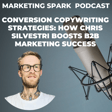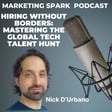
From Sign-Up to Superfan: Dale Harrison’s Secrets to Successful Customer Onboarding
In this episode, I sit down with Dale Harrison to dive deep into one of the most critical—but often overlooked—aspects of customer success: onboarding.
We all know that a great first impression can make or break a relationship, and it's no different when bringing new customers on board.
Dale shares his expert insights on how a well-crafted onboarding process doesn't just get customers up to speed but actively drives product usage, builds loyalty, and significantly reduces churn.
Whether running a SaaS company or offering a complex service, this conversation will give you actionable strategies to turn first-time users into long-term advocates.
If you want to boost retention, improve customer satisfaction, and nail that all-important first experience, you won’t miss this episode.
This episode was sponsored by LeadFeeder - https://bit.ly/3ySLl4o



















